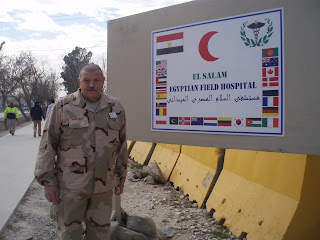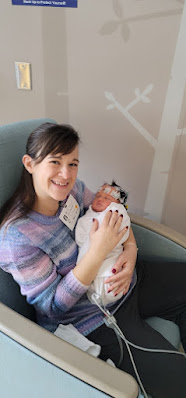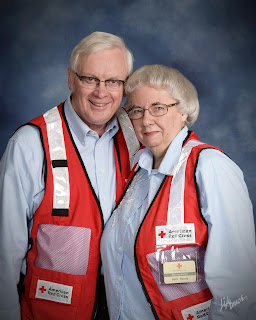Each year, while memories and tributes from the observances of Memorial Day, Independence Day and Veterans’ Day rightfully focus the spotlight on the contributions and sacrifices of military members, the American Red Cross Service to the Armed Forces Program (SAF) maintains an ongoing, vital presence in providing support to active and retired military and their families. Perhaps nothing symbolizes this more than the dedicated volunteers who form the backbone of the SAF program, and those who make service to others their life mission – like Mike Hoplight.
The Niagara Falls native’s commitment to others goes back to age 14, when he volunteered at the Niagara Falls Boys and Girls club, showing cartoons to younger children. Now, at age 75, he hasn’t let up a bit.
“My motto since I was 14 years old is that I am here to serve, not to be served.”
Hoplight joined the U.S. Army in 1967 and following the completion of a four-year active service commitment, served an additional 25 years with the Army Reserves, retiring in 1996 as a Sargent First Class – E7. During this time, he served in West Germany/West Berlin, including at the famous CheckPoint Charlie border crossing between East and West Germany during the Cold War.“I was a Wall Rat,” he remembers, explaining how he assisted people who were attempting escape from the communist east side. While stationed in West Berlin he also was assigned to the Presidential Guard for President Richard M. Nixon during the former president’s visit for the Four-Power Talks that included the U.S., Great Britain, France and Russia.
“They met at the old Nazi headquarters, and when the president was moving, we were his first line of defense. We couldn’t look at him and you could tell who everyone else was by their lapel pins,” he recalled, referring to the presence of the Secret Service and other security agencies. Hoplight can still reel off the names of the other world leaders in attendance as well.
Still, after nearly three decades of service to his country, Hoplight was not ready to let go of his commitment to being of service to others, which would eventually include his retired military family members. In 1996, coinciding with his retirement from the Army Reserves, Hoplight joined the Red Cross as a volunteer. Over the past 26 years he has continued to volunteer his time and talent, initially serving within the Disaster Services team as a Mass Care/Shelter Lead. Hoplight worked as part of relief teams responding to several high-profile national disasters, including Hurricanes Katrina, Irene and Ike, the latter where he became certified for running a Mega Shelter, which serves more than 1,000 people.
“We were actually outside in tents; there were no buildings left to hold us,” he remembers of Ike’s devastation in Texas. Overall, he was deployed 22 times to more than a dozen states including Texas, Florida, Louisiana, Mississippi, Alabama, Iowa, and North Dakota, as well as in New York and New Jersey during five assignments in response to Superstorm Sandy.
It has been his service to his fellow veterans in western New York as an SAF volunteer, however, that shines the spotlight on Hoplight and elicits genuine devotion and contentment when he talks of his work. He is a lead volunteer at the Buffalo VA; providing support to veterans in long term care on Wednesday and Friday mornings and entertaining them with unique culinary celebrations such as “Timbits and Coffee” (from a regional Tim Horton’s Donut chain), SPAM Day and Sardine & Crackers Day. The celebrations may seem funny in nature, but are extremely meaningful to the veterans who partake in them.
“Someone contacted me once and said ‘how can you give veterans SPAM and sardines, that’s disgusting,’” he said, going on to point out that for many it is a common and shared experience.
“In the military, everyone eats sardines or SPAM for the energy. All those guys (veterans) remember it, it’s part of their experience,” he said. “All this stuff – the Timbits, SPAM and Sardines – is meant to get the guys out of their rooms. These are patients in long term care or hospice, and it’s my job to get them out of their rooms, to get them distracted for a while from the fact that they have cancer, or may be dying. Instead, we are able to laugh and share a few jokes.”The Buffalo VA also happens to be one of the locations in the VA systems that offers the No Veteran Dies Alone program, designed to provide companionship at the end of life for patients who may have no remaining family members. Naturally, Hoplight sees this special role as part of his responsibility and commitment.
“We would not leave you alone on a battlefield to die, and we’re not going to leave you alone in your hospital room to die either,” he states matter-of-factly.
As much as Hoplight has given to local veterans and military families, his service has at times been at a national level. In yet another role as an SAF reservist/mobile staff member for Red Cross National Headquarters, he has deployed to support active military in combat locations three times; twice to Iraq and once to Afghanistan. The SAF reservist/mobile role is not your typical Red Cross assignment. It is highly competitive and only those who meet all requirements, including health requirements and security clearances, are eligible to be part of this elite group. These Mobile Staff Members provide direct service delivery (e.g., emergency communication messaging and comfort and care services) to service members deployed across the globe.
During his eight months in Afghanistan, Hoplight helped evacuate the wounded from Bagram Air Base.
“Every morning at 3:00 a.m, a C-17 would leave for a U.S. military hospital in Germany and another C-17 would leave for Dover (Delaware). That was a tough assignment.”
Still, instead of seeking respite in his off-hours, Hoplight volunteered his time in Egyptian and Korean hospitals set up to help wounded civilians, including children injured by mines.
“You have to understand,” he explained, “that you’re in a room (on base) that you sleep in and if you extend your arms to your sides, you can touch both walls. There’s a space heater in the hallways, but maybe not in your room. We were in the mountains and it was cold, so you kept moving. I didn’t go there to sit in my room or hang out in the coffee shop. I went there to serve.”
Now a resident of Sanborn, New York, a small town wedged between Niagara Falls and Lewiston, Hoplight has been married for 54 years and has two grown daughters and five grandchildren. They understand and have supported his service to the military.“My wife knew of my commitment to the military. I always took care of them (his family) but my wife knew what my calling was.”
His commitment continues – and its impact is great. The Buffalo VA counts more than 50,000 outpatients annually and, as Hoplight emphatically states, “It’s our duty to treat them right.” He does just that, not only in Buffalo, but at the Batavia VA as well. Still, despite all that he has contributed, it is Hoplight who extends gratitude to the Red Cross.
“I’m just grateful that the Red Cross has given me the opportunity to still serve,” he says. “That’s the most important thing to me….to serve this country.”
Within
SAF, Hoplight holds the following lead positions:
MEPS
Briefing Lead
VA
Representative for Batavia and Buffalo VA
WNY SAF Advisory
Committee Member
Other
organizations he volunteers for are:
American
Legion
VFW
Town of
Niagara Lions Club
Niagara
County Veterans Court; Mentor
Nat’l VA
Advisory Committee on cemeteries and memorials; native American and Alaskan
Native work group
Missing In
America Committee, Washington DC
Four
Chaplains society legion of honor member
American
Patriot











